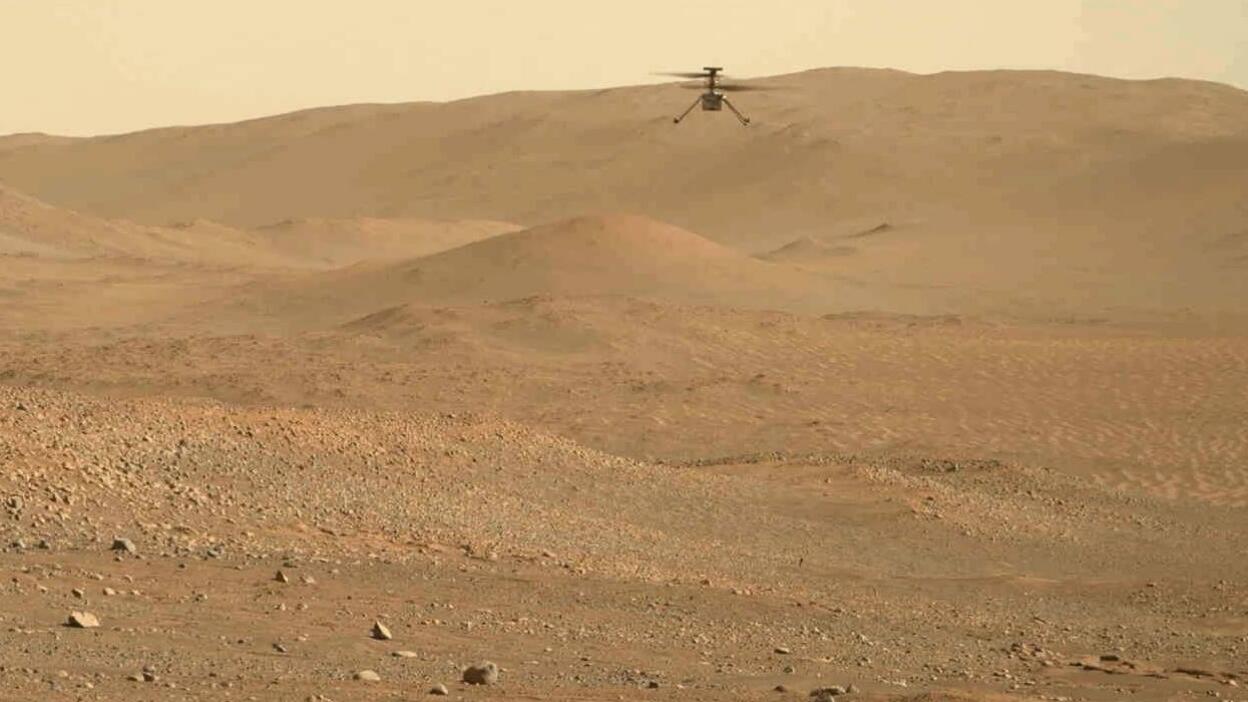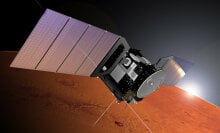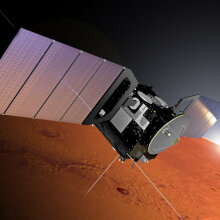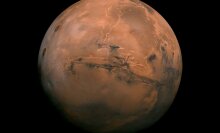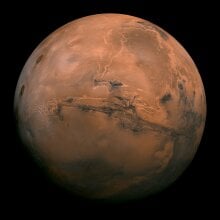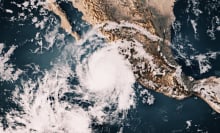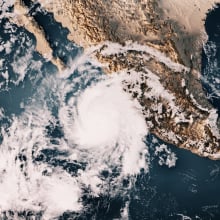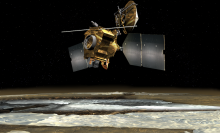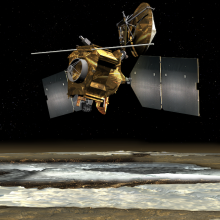Flying on Mars presents a major challenge.
The Martian surface air density is only about one percent of Earth's, making it difficult for craft to produce the lift necessary to fly. Yet NASA's experimental Ingenuity helicopter was designed to create lift with its rotors under such unique conditions. Using a four-foot wingspan, the robot has now flown over 50 times — though the space agency only expected it to last for five flights.
NASA's car-sized Perseverance rover recently captured footage of the helicopter's entire 54th flight in early August. After Ingenuity experienced a flight anomaly, causing it to promptly land, NASA ran this aerial test to make sure the navigation system still worked properly — which it does.
On the far bottom of the video, at about 5 seconds in, Ingenuity fires up its rotors. At 15 seconds in, the robot takes off. It hovers 16 feet in the Martian air before touching down. All 46 seconds can be watched below:
Credit: NASA / JPL-Caltech / ASU / MSSS
Perseverance captured this clear shot from 180 feet away. Along with its trusty sidekick, Ingenuity, the rover is scouring rocks and soil for biosignatures — "an object, substance, and/or pattern whose origin specifically requires a biological agent," the space agency explained.
"A key objective for Perseverance's mission on Mars is astrobiology, including the search for signs of ancient microbial life," NASA wrote.
Want more science and tech news delivered straight to your inbox? Sign up for Mashable's Light Speed newsletter today.
There remains zero evidence that life ever existed on Mars. But primitive life may have existed in Martian caverns or perhaps much deeper in the soil. And beyond Mars, in the oceans of Enceladus and Europa out in deeper space, planetary scientists suspect conditions might be suitable for life to evolve, if not flourish.
Topics NASA
